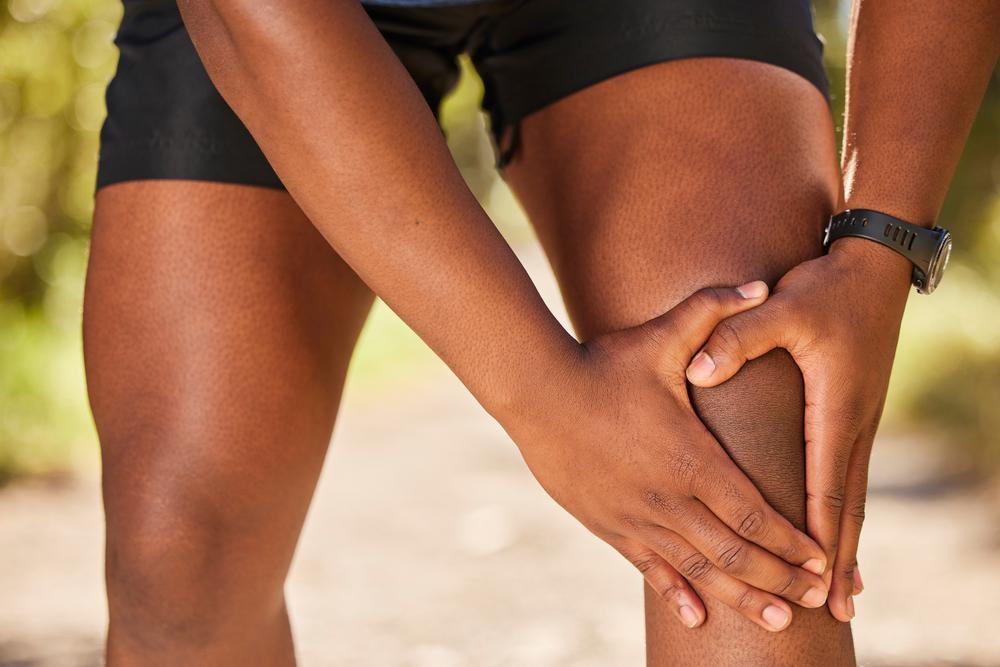Knee pain may come and go throughout the day or show up when you do certain activities. It’s a common complaint for people who are young and active. Sometimes the first thing our patients notice is a burning sensation in or around their kneecap. If you play a sport or spend a lot of time on your feet, this can really slow you down.
Most of the time, there are things you can do to find relief. Keep reading for some remedies you can try at home. Knee pain can get worse if you don’t keep your joints moving, so don’t completely stop your normal routines. However, you shouldn’t push yourself too hard. If your pain persists for more than a week, you should see a physical therapist for an assessment.
This article outlines some potential causes of that burning feeling in your knee and what you should do to find relief.
What can cause a burning sensation in your knee?
A number of injuries and conditions can potentially cause burning in and around the knee joint. Most often, we see patellar tendinitis or jumper’s knee and arthritis of the knee causing burning sensations. With patellar tendinitis, you would feel pain at the top of your knee and possibly behind your kneecap, where the patellar tendon connects to the shinbone. With knee osteoarthritis or gout, you’d be more likely to experience inflammation, stiffness, and a burning or grating sensation at the center of your knee joint.
Compression of the peroneal nerve that passes under the skin at the bottom of your knee may also cause a burning sensation. This might happen when you sit with crossed legs for too long or squat for long periods of time. Runner’s knee is a type of overuse injury that may cause burning at the front of the knee around the kneecap.
4 potential causes of that burning feeling in your knee
Conditions that cause a burning sensation in the knee may come as a result of overuse or aging and changes in your body chemistry over time. Patellar tendinitis and runner’s knee are both overuse injuries that may result from performing repetitive movements. Osteoarthritis happens over time, usually as part of the aging process, and gout occurs when too much uric acid builds up in the joints. In some cases, prolonged pressure on the peroneal nerve causes a burning feeling.
Here’s a bit more detail about potential causes of burning in your knee:
- Patellar tendinitis — Patellar tendinitis is pain and inflammation in the tendon that connects the top of your kneecap to your shinbone. It’s also known as “jumper’s knee” because excessive jumping puts a lot of strain on this tendon. It’s common among athletes like basketball and volleyball players.
- Arthritis — Knee osteoarthritis is the wearing away of cartilage at the ends of the femur and lower leg bones. It’s common for people who bend their knees and kneel a lot because of their job. Gout is a type of arthritis that occurs when a high amount of uric acid causes urate crystals to accumulate in the joints. People often feel it first in their big toe joint and their knees. A high intake of things like beer, red meat and fructose can increase the likelihood of developing gout along with certain medical conditions and medications. These include diabetes, heart or kidney disease, and excess weight. Having high blood pressure (hypertension) and taking medications for hypertension or low-dose aspirin can also contribute.
- Irritation of a nerve — A branch of the sciatic nerve called the peroneal nerve passes through a narrow space between the shinbone and the skin just below the knee. Anything that increases the pressure on this nerve, like crossing your legs, squatting, wearing compression socks, or immobilizing your leg with a cast or splint, can cause a burning sensation.
- Runner’s knee — Runner’s knee is also known as chondromalacia or patellofemoral pain syndrome (PFS). It happens when cartilage behind the knee is damaged from overuse. You may notice more of a dull, aching pain that increases when you bend your knees.
What should I do if I have a burning feeling in my knee?
If you’re feeling just a small amount of burning that comes and goes, you can try treating it with PEACE & LOVE at home. This stands for protection, elevation, avoiding anti-inflammatories, compression, and education (PEACE), and load (increasing your daily load as your pain allows), optimism, vascularization (moving your body), and exercising the affected joint (LOVE).
If your pain doesn’t subside within a week with PEACE & LOVE, you should make an appointment with a physical therapist. At Forever Fit, we start with a detailed physical assessment and ask you some questions about your pain. From there, we create a personalized treatment plan. This might include some hands-on treatments like manual therapy and dry needling that can provide relief after just one session. We’ll also show you some stretches and exercises to strengthen the muscles that support your knee joint.
Get relief from burning knee pain at Forever Fit
Continuing to put strain and pressure on your knee joint can turn a burning sensation here and there into a chronic condition. If you’ve already tried the different elements of PEACE & LOVE at home, it’s time to get a professional assessment.
Many health care providers can’t narrow down the issues causing pain symptoms to find the most appropriate treatments. At Forever Fit, we offer advanced diagnostic testing to help us determine the likely cause of your knee pain so we can provide treatments that work. If you’re an athlete, ask to work with one of our sports performance specialists.
Are you ready to find out what’s causing the burning in your knee and seek treatment? Contact our team today for more information or to schedule an assessment.

